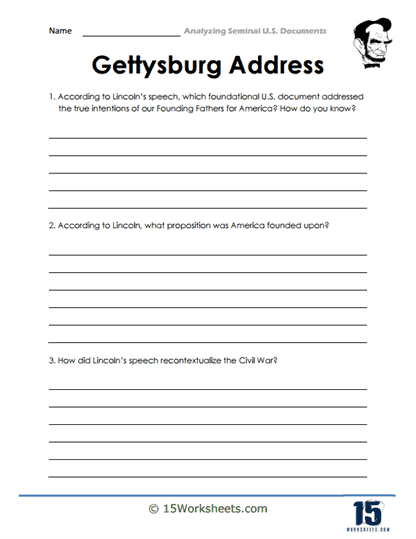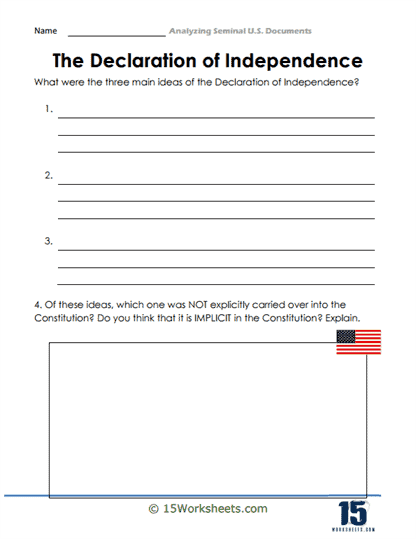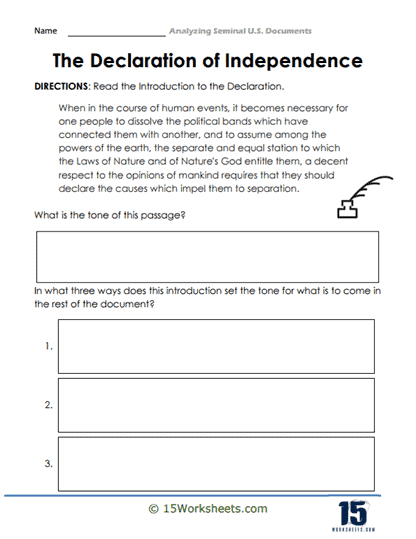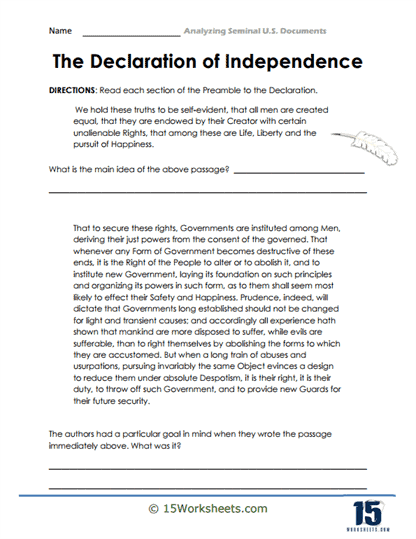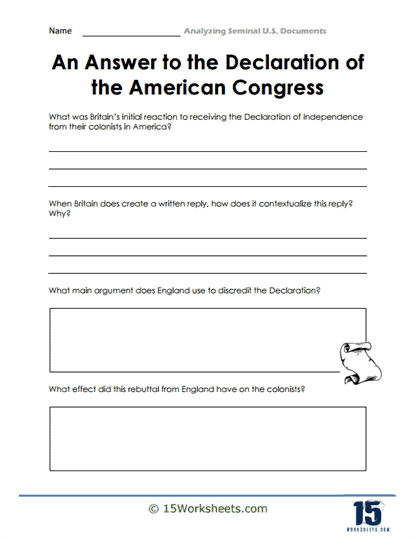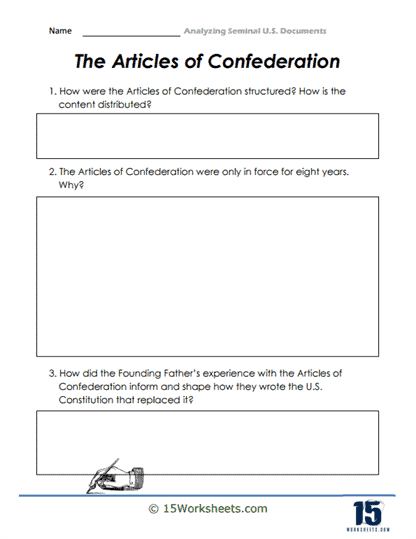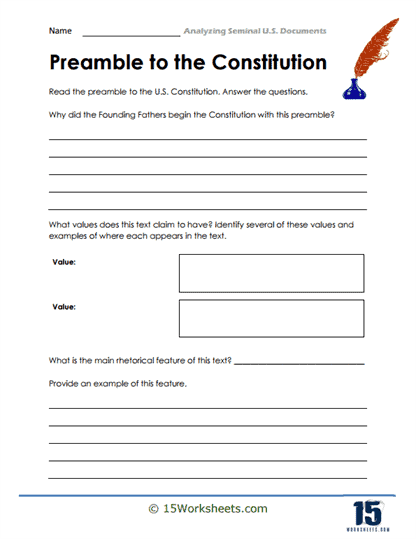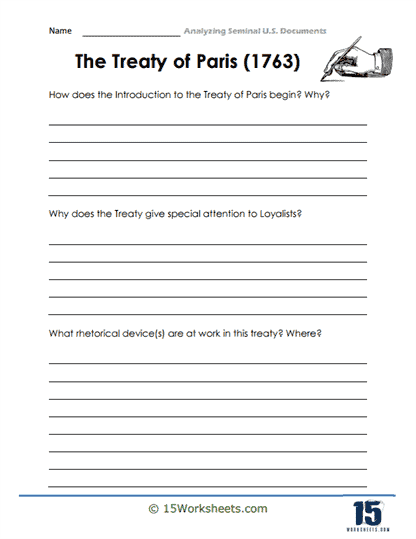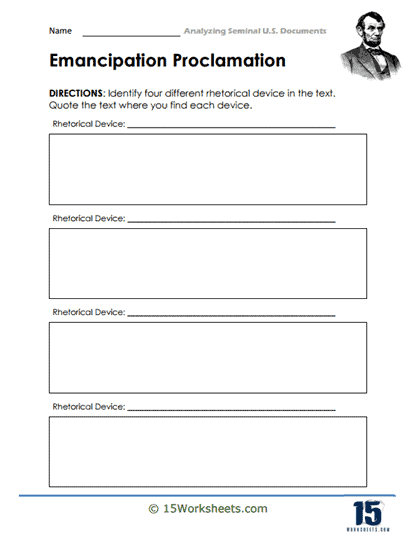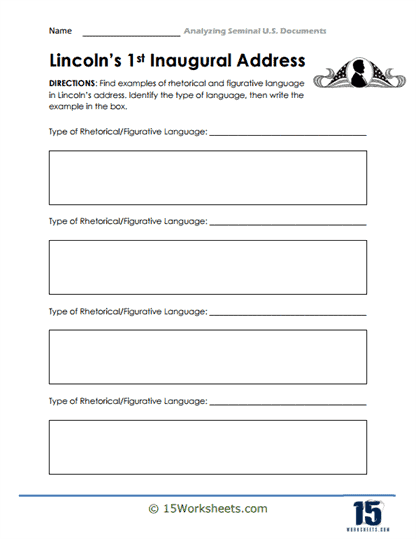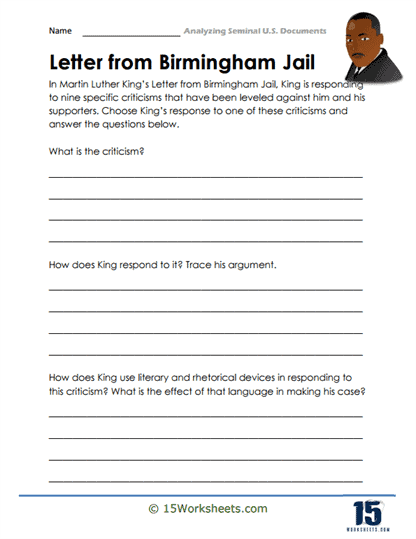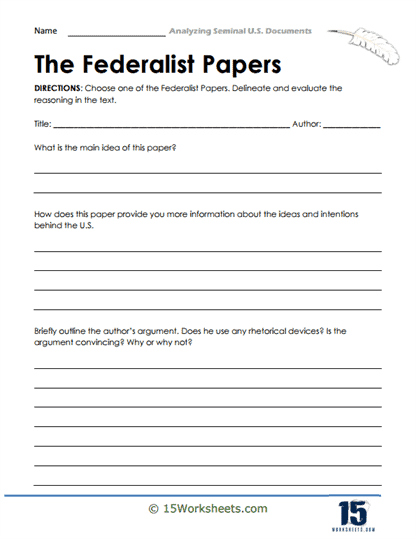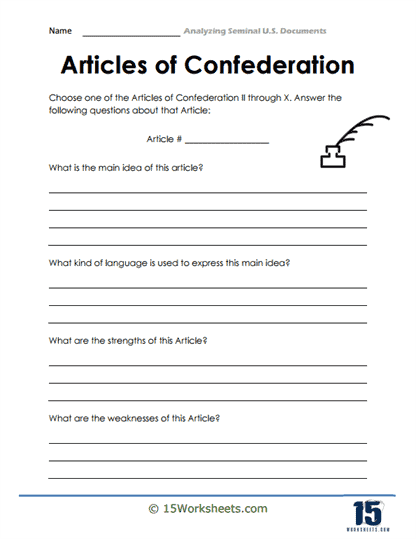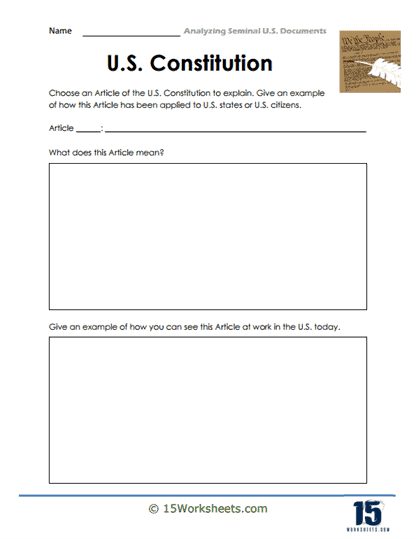Seminal U.S. Documents Worksheets
All About These 15 Worksheets
Students step into the rich tapestry of American history with this comprehensive series of Seminal U.S. Documents worksheets. This collection delves into the profound impact of key documents that have shaped the nation’s identity, governance, and ideals. From the stirring rhetoric of the Gettysburg Address to the foundational principles outlined in the U.S. Constitution, these worksheets provide students with a deep understanding of the historical context, significance, and enduring relevance of these seminal texts. Through engaging activities, primary source analysis, and critical thinking exercises, students will develop a profound appreciation for the ideas, values, and aspirations that have shaped the United States. Through these worksheets, students will:
- Uncover the significance of the Gettysburg Address in shaping American democracy and ideals;
- Explore the ideas, grievances, and aspirations that led to the birth of the United States by reflecting on the significance and impact of the Declaration of Independence;
- Study Thomas Jefferson’s powerful rebuttal to the British response to the Declaration of Independence;
- Examine the strengths and weaknesses of the first governing document of the United States, consider the challenges faced by the young nation, and evaluate its impact on the formation of the Constitution;
- Analyze the Preamble to the United States Constitution, uncovering the fundamental goals and principles of the nation’s governing framework;
- Learn all about the individual rights and freedoms enshrined in the Bill of Rights and reflect on their importance in protecting citizens’ liberties;
- Gain insights into the diplomatic efforts and ramifications of the Treaty of Paris;
- Look into the motivations behind the Emancipation Proclamation, its limitations, and its role in shaping the Civil War and post-war society;
- Engage with President Abraham Lincoln’s powerful inaugural address, delivered on the brink of the Civil War;
- Broaden their understanding of Martin Luther King Jr.’s arguments for civil rights, nonviolent resistance, and the quest for justice by looking into his renowned “Letter from Birmingham Jail”;
- Be introduced to the Federalist Papers, a series of influential essays advocating for the ratification of the U.S. Constitution, and choose one of them to do an evaluation on;
- And analyze the structure, principles, and provisions of the U.S. Constitution, reflecting on its endurance and adaptability throughout American history.
Through this expansive series of Seminal U.S. Documents worksheets, students will embark on a transformative journey, gaining a deep appreciation for the historical foundations and principles that have shaped the United States. By engaging with these exercises, students will develop critical thinking skills, historical empathy, and a deeper understanding of the ongoing relevance of these texts in contemporary society. This collection serves as an invitation to explore the ideas, debates, and aspirations that have guided the nation, fostering active citizenship and empowering students to contribute to a more inclusive, just, and democratic society.
What Are Seminal U.S Documents?
A seminal document for a country is any documented event in history, such as a letter, speech, treaty, declaration, laws, and court decisions that have effectively contributed to the condition of the country now. To check if something is seminal, you need to analyze how it has influenced the nation from a critical perspective.
Five Major Influential U.S Seminal Documents
The Declaration of Independence
The declaration of independence, July 4, 1776, was the official seminal document that created the now independent United States of America. The thirteen colonies under British rule unanimously agreed on the independent country with all independent states. The intolerable acts became the basis of this step. All the thirteen colonies signed the independence document that had three primary points to be noted:
1. All men are equal in front of God, and they have the same rights to live a happy, prosperous life.
2. The government only exists to protect the rights of the people.
3. In case of the government’s incompetence or abuse of power, the public has the right to overthrow it.
The Constitution of the U.S
The first written constitution divided the power into three offices of the legislature, executive, and judicial offices. It was proposed in September 1787 to protect an individual’s rights and create checks and balances on the officials governing. The constitution was ratified in March 1789, proving to be the first fundamental law of the country. However, the constitution has undergone 27 amendments over 200 years.
Bill of Rights
The bill of rights is the first ten amendments in the constitution of the U.S. These all were ratified together in the form of the bill on December 15, 1791. The bill talked about giving clear individual rights to all the natives, regardless of their background, an equal opportunity of freedom of speech, protest and follow any religion. It also introduced the laws for the rights of the accused, such as trial by jury.
Gettysburg Address
Although this is a 2-minute and some-seconds speech delivered by Abraham Lincoln at Gettysburg, it is still considered a seminal document. The Everett copy of the historical document lies in The Abraham Lincoln Presidential Library and Museum. The speech on November 19, 1863, during the civil war, referred to the declaration of independence that all men are equal in creation and said, “…government of the people, by the people, for the people.”
Letter from Birmingham Jail
During the movement of civil rights, the open letter written on April 16, 1963, by Dr. Martin Luther King while he was imprisoned in Birmingham Jail talks about the injustice and discrimination toward African Americans. It aims to persuade people to rise against injustice. He wrote, “Injustice anywhere is a threat to justice everywhere. We are caught in an inescapable network of mutuality, tied in a single garment of destiny. Whatever affects one directly affects all indirectly … anyone who lives inside the United States can never be considered an outsider anywhere within its bounds.”
“I Have A Dream” by Dr. Martin Luther King Jr.
Another speech documented as a seminal document in the history of the civil rights era and quoted everywhere in the world to promote equality is the “I Have a Dream” by Dr. King. He delivered this speech during the March on Washington on August 28, 1963. He stated his dream for America, and this speech became the call for equality and freedom to end racism.

